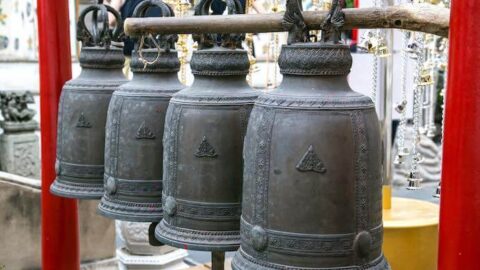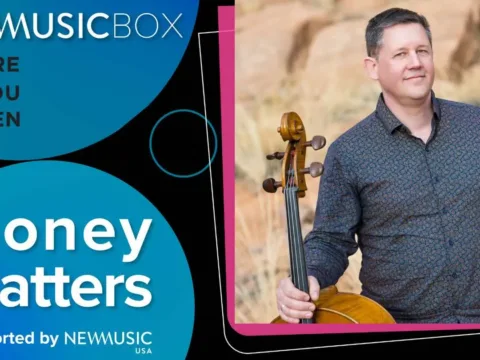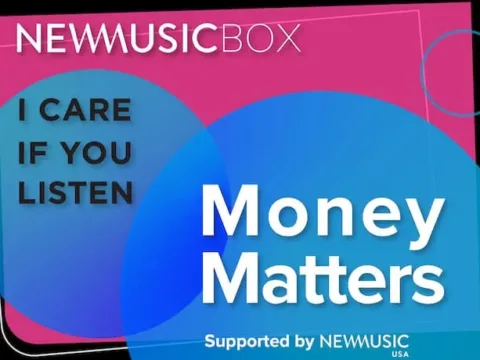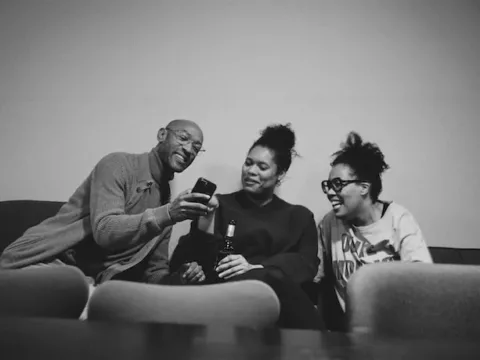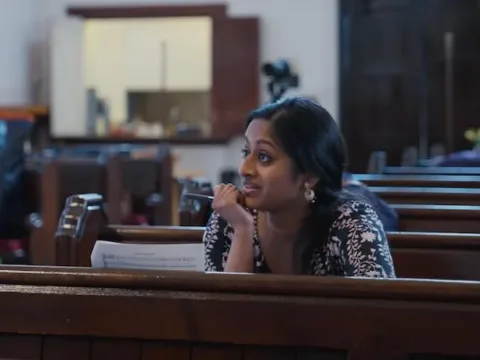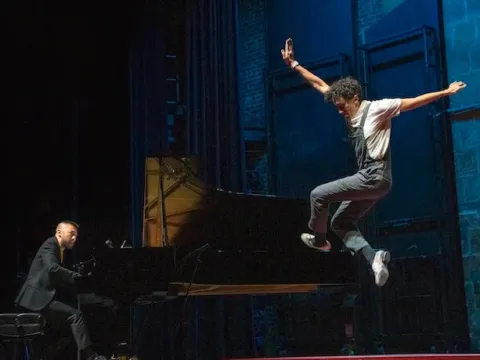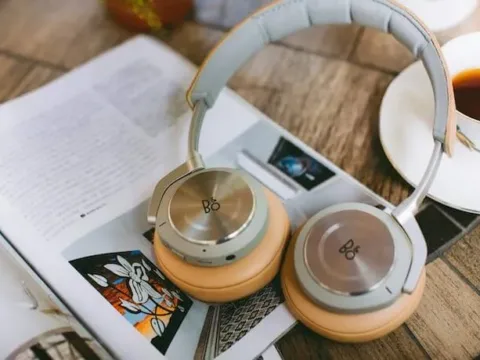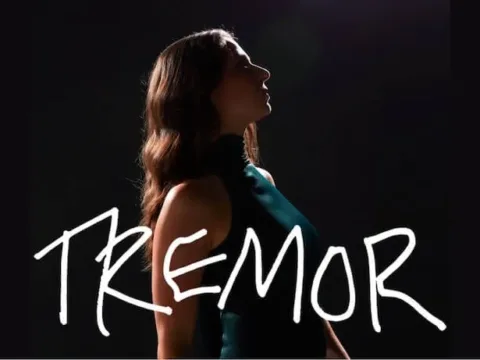“Out of Context” is a 10-part series that addresses the topic of cultural appropriation as it intersects with both Western European-based classical music and the broader social landscape. Commissioned by American Composers Forum and I CARE IF YOU LISTEN, the goal of the series is to offer information and diverse perspectives to those seeking to acknowledge historical context, honor cultural traditions that are not their own, and expand their sphere of knowledge with awareness and respect. A culminating collection of these articles and other resources will be shared for continued learning and dialogue.
“Why are you writing German music? You should write Canadian-Chinese music.”
“I like the Asian chords in your music.” (They were perfect fifths.)
“I’m surprised you conceive of time in this way, particularly because you are of Asian stock.”
While a student in both Canada and Germany, mentors in composition masterclasses posed these questions and statements to me. At first these statements were incredibly confusing, but they have become particularly important to me as a composer, engendering attitudes about musical material, techniques, tradition, and authenticity in contemporary music. They have pushed me to reflect on my musical identity in relationship to contemporary classical music and how one feels a sense of belonging (or not belonging) within an international community of diverse representations. Now a university professor, I’m confronted by these issues as a composition mentor. From students who want to add ‘exotic’ elements to their music with world instrument sample packs, to the curriculum design of a theory program addressing the Eurocentric paradigm prevalent in music schools, I find myself challenged by how to balance classical tradition with a globalized and inclusive musical world. In a fluid landscape where ideas and materials are exchanged between groups of people with both positive and negative consequences, how do we navigate the use of culturally specific aspects of music with respect and recognition of the source communities?
What are cultural musical objects?
Cultural musical objects are any musical feature that can be objectified and shared between diverse groups and communities. This can mean instruments and sounds, but also techniques, structures, and musical philosophies. Musical techniques and the ways in which they are structured and organized are knowledge transmitted through text or apprenticeship. Often, the process of enveloping structural ideas from global musical cultures into classical music involves translating techniques that are largely orally communicated. This is a process of categorizing, theorizing, and turning traditions into objectified symbolic representations. But in doing so, do we lose something inherent to the understanding of these techniques?
Many orchestral instruments have long histories resulting from the convergence of cultures. In the string family, the body and bow originated from instruments of ancient Mesopotamia, and the modern clarinet has roots in single reed instruments from Ancient Greece and the Middle East. However, some instruments are relatively new to the classical instrumentarium, and in that respect, sound ‘exotic,’ offering new timbral possibilities for the composer. The percussion studio at any music school is filled with instruments from various cultures. The marimba and xylophone derive from African instruments, and all kinds of metallic gongs and cymbals have been imported from across Asia. Unless presented in token world music ensembles, most of these instruments are used for their sound, out of context, stripped of their original cultural meaning.

Composers writing for percussion flock to these studios searching for ways to utilize and transform these sounds. For example, the Chinese opera gong projects a distinctive sound, representing a musical tradition within Chinese culture. Even though my knowledge of Chinese opera is very limited, I have strong cultural associations with this instrument. Should I abandon my own cultural baggage when listening to this instrument within contemporary music? Instruments and their timbres represent artifacts of cultural memory and contribute to the search for meaning in music. We must respect this aspect of all instruments, acknowledging that timbres are signifiers that lead to specific cultural implications and associations.
Cultural musical objects also represent a community’s ways of observing and conceptualizing the world. John Cage’s interests in Zen philosophy, and his interpretation of the Chinese classical oracle book, the I Ching, are well known. His application of these ideas to attitudes towards time, material, and silence, was revolutionary to contemporary music in the 1950s and 60s. Cage’s works may not explain Zen or Chinese divination, but many of Cage’s ideas and his compositional process derive from his studies of Asian culture. While I respect his artistic and philosophical output, I’m conflicted with the knowledge that some of what he expresses derives from a North American view of Asian thought. I do not doubt Cage’s sincerity with his use of the I Ching, and his emersion into Zen and Japanese culture was probably deep and profound. But in a world where we celebrate the ideas of individual geniuses like John Cage, how do we also acknowledge the source communities for these ideas?
Owning the Intangible
A challenge in assessing the appropriation of cultural musical objects is the inability to trace their origins of ownership. Many of these objects result from communal expressions of artistic values and practices, and not necessarily from individual invention. Further, cultural musical objects represent the intangible aspects of a culture: belief systems, rituals, and other forms of group expressivity. In contemporary music, we are accustomed to documented and fixed expressions of creativity, i.e. the written score, but in many cultures, oral expression is prevalent and preferred.
The inability to trace direct ownership of cultural musical objects makes them vulnerable to appropriation. This is particularly difficult in North America where we pride ourselves on multiculturalism and integration. Cultural musical objects might not be seen as foreign imports, but rather part of the North American experience. Individuals might belong to and identify with multiple cultural groups, leading to intersectionality between authentic cultural expressions.
In a contemporary musical world that favors innovation and individuality, composers are continually searching for new sounds and techniques. There is an advantage for the composer who has access to an expanding range of cultural musical objects. However, with an increasingly globalized world, it becomes difficult to control a cultural musical object’s proliferation. Who has the right to define a cultural musical object’s accepted use? Generally, accepted use is defined within the source community. But disagreements among sub-groups within source communities can also occur. This leads to questions about policing the accepted use of cultural musical objects. Rather than policing, however, we should foster environments of discussion and reflection on power inequities between non-members and members of source communities in relationship to cultural musical objects.
[Tweet “Who has the right to define a cultural musical object’s accepted use?”]
Appreciation vs. Appropriation
Our ability to appreciate diverse cultural musical objects results from the privilege of international travel and cultural exchange. Imagine this situation: you are on vacation and find yourself at an outdoor market supporting local traditional handcrafts. You purchase a musical instrument related to the local culture whose sound you find fascinating, but you cannot play it with any technical or informed practice. Back home you begin looking for sounds for your new electronic composition. You decide to sample this instrument, recording yourself playing it in non-traditional ways and subject it to various electronic timbral transformations. After the work is complete and released, it gets picked up by an advertising agency for a new product. You start collecting royalties for your work.
Various questions related to appropriation arise here. Was it appropriate for you to use this instrument out of context? Was there an unspoken contract between you and the source community about its use after you purchased the instrument? How long have you engaged in study of this instrument? What is your position of power as purchaser of this object? Was it acceptable for you to transform the musical object irrespective of its traditional use? How does the source community view the profiting off the use of the object by external members?
Cultural musical objects navigate a murky space between appreciation and appropriation that is unregulated and unprotected by legal frameworks. The purchase of cultural musical objects at a local handcraft market might be seen as monetarily beneficial to the source community. Your use of cultural musical objects in your work might also provide global awareness and recognition, allowing the source community to promote their culture. But is there an underlying understanding from the community perspective that prohibits the external commodification of the cultural musical object?

As an external non-member of that community, you have agency in how you subsequently use and interact with that object in your practice. One could mis-appropriate the object by transforming it into something completely different, distorting its meaning and divorcing it from traditional cultural connections. Here, you impose the power of a privileged few, turning the cultural musical object into something that suits your individual taste, resulting in harm to its intangible aspects and reducing its cultural value. If you decide to profit from this object, you project an exploitive economic attitude.
There are, however, respectful ways for non-members to recognize the intangible aspects of a cultural musical object. Cultural appreciation creates a symbiotic relationship between the borrower and the source community, such as a scholar cataloging and preserving a marginalized culture’s music practices. For composers, no one will prevent you from using a gong in a percussion set-up, and no one will regulate you in your use of rhythmic patterns that you picked up during a trip to Indonesia. However, in the same manner we are taught to be critically aware of the use of classical forms, techniques, and styles, so too must we be aware of the traditional auras of the cultural musical objects we borrow. Apprenticeships with community members allows for deep engagement and understanding of the intangible aspects of the cultural musical object, often leading the external member to become a proponent for that culture. Community guidelines play a significant role in this cultural exchange.
By recognizing a cultural music object’s intangible value and relationship to the source community, we create positive relationships that are both informed and respectful. This approach is not about policing their usage, but allows for critical self-inspection of one’s power and relationship to these cultural musical objects, and a respect for the source communities from which they derive.
